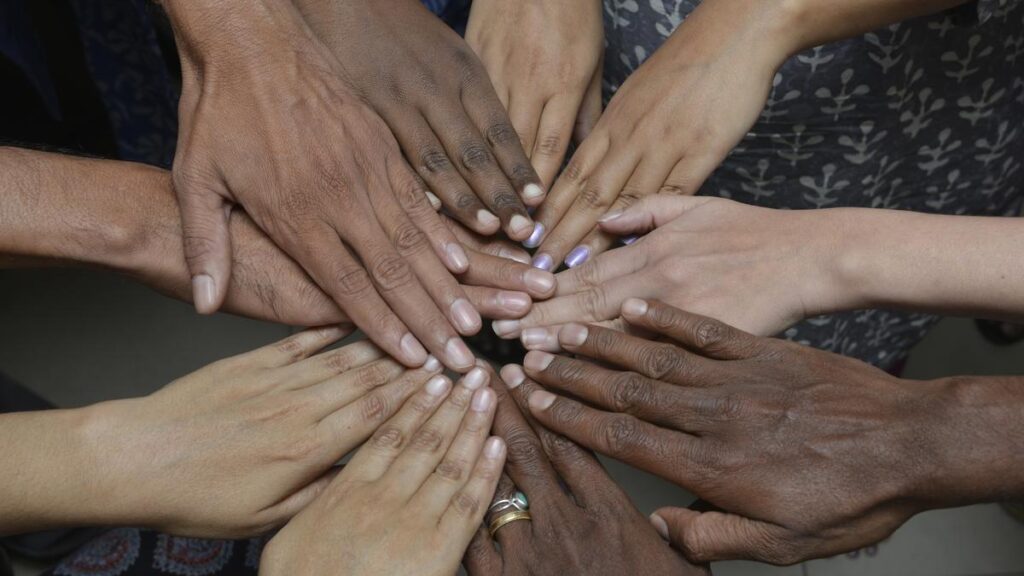For 32-year-old Ananya (name changed), a content strategist from Bengaluru, dark patches began appearing around her temples and neck nearly four years ago. “At first, I thought it was just tanning. But over time, the patches deepened, especially around the folds of my skin. No matter what cream I used, nothing helped—and worse, people started asking if I had a disease or wasn’t taking care of myself,” she says.
It took years of misinformation, home remedies, and even steroid-containing creams before she finally received a diagnosis: Lichen Planus Pigmentosus (LPP)—a chronic pigmentary disorder that disproportionately affects individuals with darker skin tones. “The hardest part wasn’t the condition—it was the way people looked at me. I became self-conscious, even anxious in social situations. I didn’t know this was a recognised medical issue. I thought it was just me,” Ananya shares.
Stories like hers underscore the urgent need for public awareness—especially around lesser-known conditions like LPP. That’s why International Skin Pigmentation Day, observed globally every May 25, matters. This annual observance is not only about educating the public on pigmentation disorders such as melasma, LPP, and post-inflammatory hyperpigmentation; it also aims to challenge long-standing biases, foster inclusivity, and celebrate the diversity of skin tones worldwide.

Understanding pigmentation in Indian skin
“In Indian skin types, while melasma and post-inflammatory hyperpigmentation are common, we also see conditions like Lichen Planus Pigmentosus, pigmentary demarcation lines, lentigines, and photopigmentation,” explains Rashmi Sarkar, director professor of dermatology at Lady Hardinge Medical College, founder of the Pigmentary Disorders Society India, and International director of the ILDS for South Asia, Middle East & Africa (2023–27).
LPP, in particular, is a chronic condition characterised by dark, slate-gray patches that often affect the face, neck, and flexural areas. “It’s often mistaken for dirt, neglect, or poor hygiene,” says Dr. Sarkar. “This adds an extra layer of stigma for patients, especially women. And because LPP is persistent and slow to respond to treatment, it can be emotionally distressing.”
Indian skin presents unique challenges in the context of hyperpigmentation. With naturally higher melanin levels, skin of colour is more reactive to inflammation, sun exposure, and mechanical stress. Dr. Sarkar emphasises the importance of tailored dermatological care: “What works for lighter skin may not work—or may even harm—darker skin. Treatments must start gently, focusing on sun protection, anti-inflammatory agents, and appropriate pigment inhibitors.”

Changing norms, growing awareness
According to Dr. Sarkar, growing interest in skincare is a double-edged sword. “People are more proactive now, especially in urban areas,” she says. “But this also means a flood of misinformation—people blindly adopting global skincare trends that don’t account for Indian skin biology.”
To address this, she founded the Pigmentary Disorders Society, India’s first organisation focused exclusively on pigmentary diseases. “We need structured research, education, and community awareness—not just quick-fix beauty trends,” she explains.
In a culture where fairness has historically equated to beauty and privilege, unlearning internalised colourism remains a challenge. While media and celebrities have helped start the conversation, Dr. Sarkar believes dermatologists must be at the forefront.
“For people with conditions like LPP or melasma, the worst thing they can do is use unsupervised skin-lightening agents or harsh peels. Many of these products contain banned substances like mercury or potent steroids, which can lead to long-term damage,” she warns. “Hydroquinone, while effective, should only be used under strict medical supervision. DIY remedies like lemon juice or essential oils can make pigmentation worse.”
Instead, she advises focusing on broad-spectrum sunscreen, avoiding excessive friction or heat, and using products specifically designed for sensitive, pigmented skin. “It’s about skin health, not skin tone,” she reiterates.
A global issue with local roots
The International League of Dermatological Societies (ILDS), an umbrella organisation of dermatologic societies worldwide, plays a critical role in raising awareness and advocating for safe skin health practices. Under the leadership of its president, professor Henry W. Lim, the ILDS actively educates against unsafe skin-lightening behaviors, including the misuse of topical steroids, fairness creams, and harmful bleaching agents, as part of its broader advocacy mission. In her role with the ILDS, Dr. Sarkar addresses the global implications of skin tone bias, emphasising that across regions like South Asia, Africa, and Latin America, skin bleaching has become a public health crisis with consequences ranging from severe skin damage to kidney failure and even cancer.
Dr.. Sarkar has helped champion global resolutions to regulate harmful products and shift beauty narratives. “We must stop viewing dark skin as a flaw. That mindset is dangerous—and deeply unfair,” she says.

Looking ahead: policy, practice, and self-care
To lead meaningful change in this space, Dr. Sarkar emphasises the need for a multipronged approach in India. This includes strengthening dermatological training with a focus on skin of colour, launching public health campaigns that are firmly rooted in scientific evidence, and implementing stricter regulations against harmful and misleading cosmetic products. She underscores that treatment for pigmentary disorders—whether melasma, LPP, or post-inflammatory hyperpigmentation—must be evidence-based, gradual, and guided by qualified dermatologists.
Foundational care should begin with the consistent use of broad-spectrum sunscreen, complemented by anti-inflammatory agents to reduce irritation and flare-ups. Pigment-lightening ingredients such as azelaic acid, kojic acid, and tranexamic acid may be used judiciously under supervision.
Above all, managing pigmentation requires patience, consistency, and a compassionate approach that prioritises skin health over cosmetic perfection. “These are chronic conditions. Improvement takes time—but it’s possible,” Dr. Sarkar says. “And there should never be shame in seeking help or embracing your natural skin.”
International Skin Pigmentation Day is not just a day for medical education—it is a cultural reckoning. In a country where skin tone still influences confidence, social value, and opportunity, this day reminds us to unlearn toxic beauty standards and replace them with science, empathy, and respect.
As Dr. Sarkar puts it: “The future of skin health lies in celebrating diversity—not erasing it.”
(Dr. Monisha Madhumita is a consultant dermatologist at Saveetha Medical College, Chennai. She can be reached at [email protected] )
Published – May 25, 2025 07:01 pm IST

